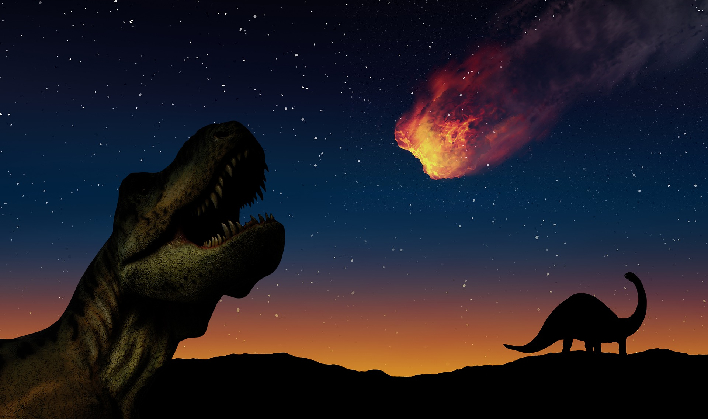Huge Asteroid That Killed The Dinosaurs Triggered A Monster Tsunami With Mile-High Waves

The study takes a look at the asteroid impact on Mexico's Yucatan Peninsula through a global simulation of the Chicxulub impact tsunami. U-M researchers reviewed the geological record at more than 100 sites worldwide and in turn found evidence that supports the simulation's predictions about the catastrophic tsunami's path and power.
"This tsunami was strong enough to disturb and erode sediments in ocean basins halfway around the globe, leaving either a gap in the sedimentary records or a jumble of older sediments," remarked Molly Range, who conducted the modeling study for a master's thesis under U-M physical oceanographer and study co-authors Brian Arbic and Ted Moore.
Range says that the distribution of the erosion and hiatuses that were seen in the uppermost Cretaceous marine sediments were consistent with the model they developed. The calculated initial energy in the impact tsunami was up to 30,000 times larger than the energy in the December 2004 Indian Ocean earthquake tsunami. That tsunami was responsible for the deaths of more than 230,000 people and is one of the largest on record.
The simulation shows the impact of the tsunami was mainly focused to the east and northeast into the North Atlantic Ocean, and to the southwest through the Central American Seaway. However, the South Atlantic, the North Pacific, the Indian Ocean and the region known today as the Mediterranean were mostly shielded from the most damaging effects of the tsunami in the simulations.

The study modeled the asteroid after previous findings. They estimated the asteroid to be 14 kilometers (8.7 miles) in diameter, moving at 12 kilometers per second (27,000 mph). As it struck, it produced a roughly 100-kilometer-wide (62-mile-wide) crater and ejected dense clouds of soot and dust into the atmosphere.
According to the team's simulation:
- One hour after impact, the tsunami had reached the Gulf of Mexico and into the North Atlantic
- Four hours after impact, waves had passed through the Central American Seaway and into the Pacific
- Twenty-four hours post-impact, the waves had crossed most of the Pacific from the east and most of the Atlantic from the west and entered the Indian Ocean from both sides
- At 48-hours after impact, significant tsunami waves had reached most of the world's coastlines
Top Image Credit: Gerd Altmann from Pixabay

